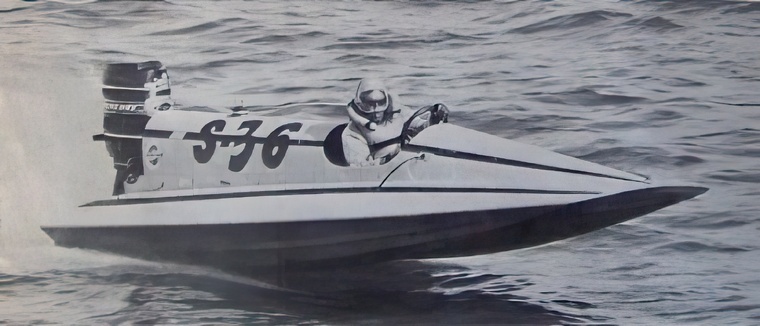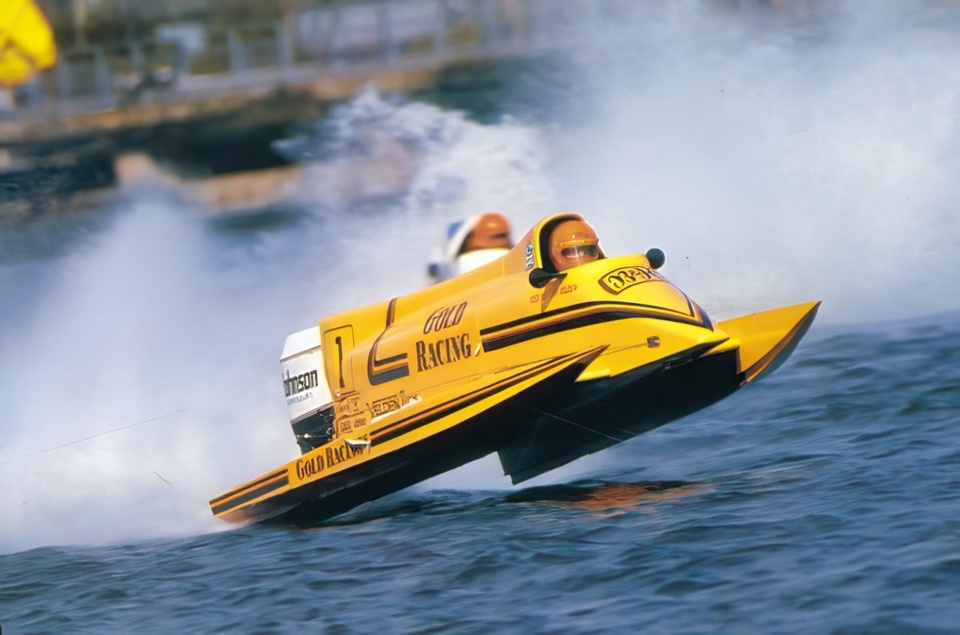
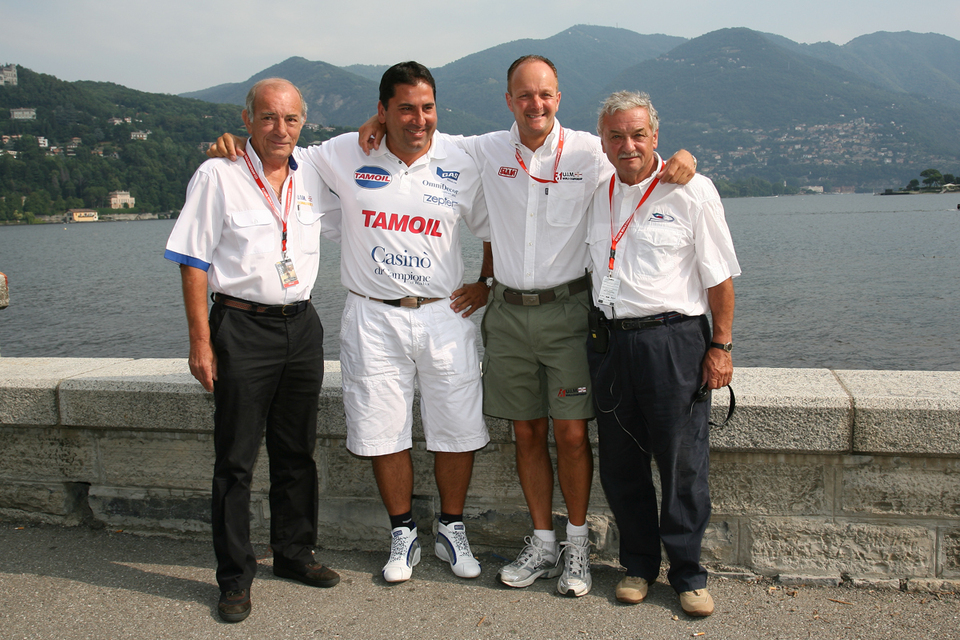
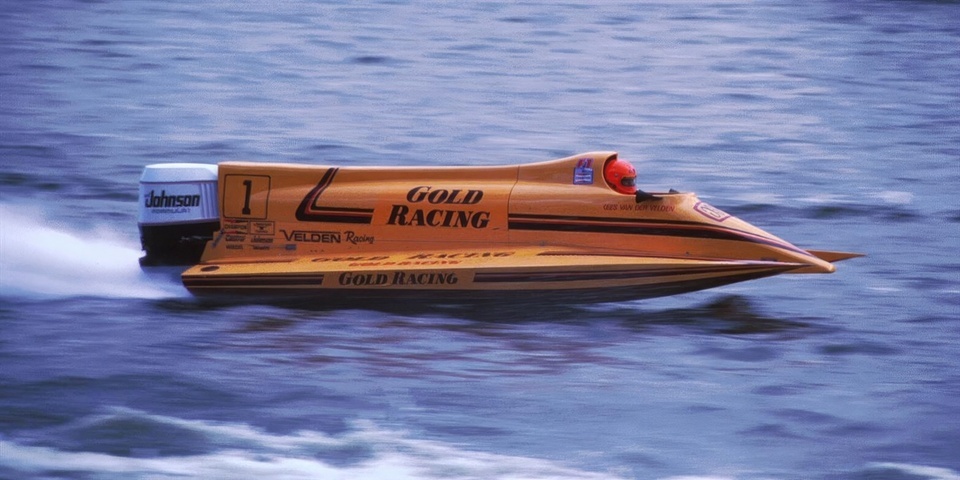
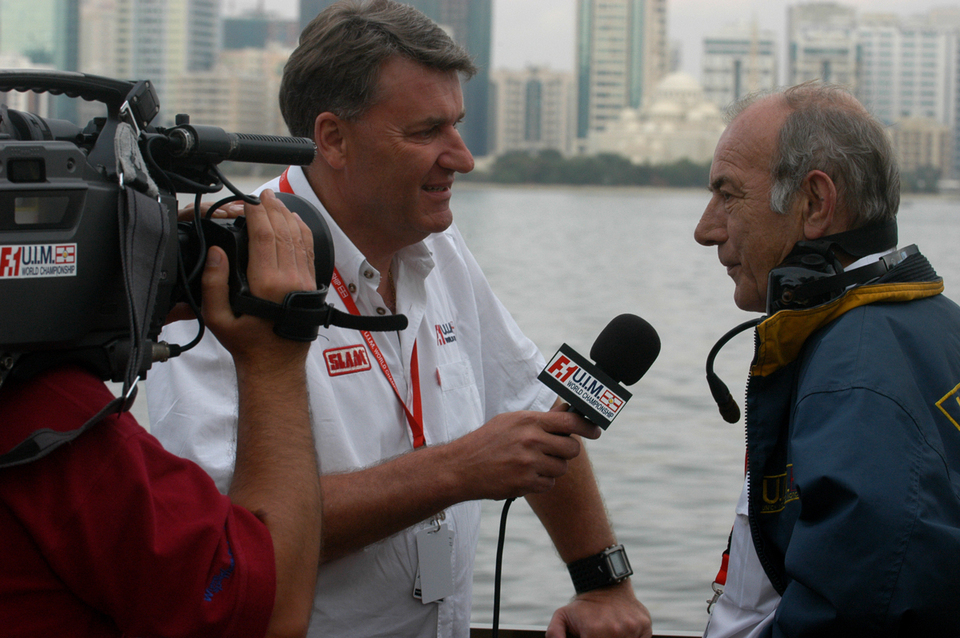
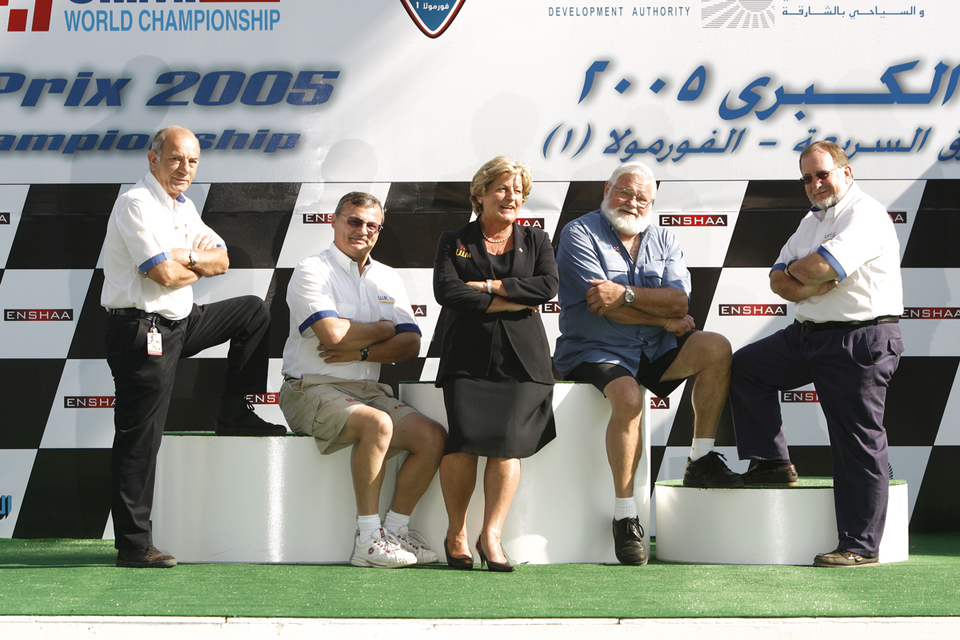
Thursday, May 2: Cees van der Velden was one of the founding fathers of the modern-day UIM F1H2O World Championship. Nicknamed the ‘Flying Dutchman, van der Velden was born in Nistelrode in September 1941 and began competing in powerboat racing in 1966.
He started out in local events in the V-hull 70 class and rapidly progressed to international racing, winning seven World Championships and missing out on a possible eighth after a crash. The Dutchman also won several Dutch and European titles in the early OPC (Outboard Performance Classes) and the 1969 Berlin 6 Hours before joining the catamaran class in 1970. After just two seasons, he claimed a maiden world title after beating his then team-mate Renato Molinari. In 1972, he also won the F2 Sprint and ON World Championship and repeated the F2 success in 1975.
Van der Velden was part of Mercury Marine’s legendary ‘Black Angels’ team alongside the likes of Bill Seebold, Molinari and Cesare Scotti. A switch from Team Mercury to arch-rival Outboard Marine Corporation (OMC) in 1974 enabled Cees to design and race his own Velden boats, although he also teamed up with Seebold to win the prestigious Paris 6-Hour and Parker (Arizona) Enduro events that summer.
The Dutch racer went on to win additional ON world class titles in 1974-75 and 1979 to add to Continental ON successes in 1974, 1976, 1978-79, the Continental OZ title in 1977, 1978, 1980 and 1981 and the European OZ Endurance Championship, the Canon Trophy and Paris 6 Hours in 1979.
In 1981, the John Player tobacco brand chose to support the OMC-powered OZ Championship. This came about after an escalation in engine development between rivals Mercury Marine and OMC, which led to the created of the V8-powered OZ class. The ON class utilised two-litre power units but boats fitted with the ON units struggled to be competitive and a split was confirmed between the OZ and ON classes with both going their separate ways in 1981.
The Formula ON Drivers Association (FONDA) set up the ON series, which was given the name of the World Grand Prix, and the OZ series became the Formula 1 World Series.
Speaking in one of his last interviews to H2O Racing’s Stephen Michael in 2006, van der Velden talked about the 25 year-period since the forefather to the modern-day World Championship was devised in 1981.
He said: “The sport has not changed very much. Boat building is a bit different than it used to be. Ages of the racers has changed. The ones I used to compete against, like Renato Molinari, Bob Spalding, (Tom) Percival, (Roger) Jenkins, all these old guys from the early days. We tried to do the best we could. Lake Como was the very first race we did (OMC V8), I think in ’81. It was a pretty good season.
“It was a fun time those days with companies like Mercury and OMC. That made it extra special for me to make you want to do a little better than you probably would normally do. To make it loud and clear, my favourite team-mate was Renato Molinari because he did a lot of things to me. Later on, we became friends and that was the end of it. I always liked racing in Pittsburgh. If I made it to the end, I would win. We have to gamble a little in the future to make the sport even more professional. We need more people around who are supporting this sport.”
As the two rival series continued, a tragic accident claimed the life of Tom Percival and van der Velden pulled his three-boat Benson & Hedges-backed team out of the OZ series. Molinari won the inaugural F1 World Powerboat Championship in 1981 and went on to win again in 1983 and 1984, while Jenkins was triumphant in 1982. Van der Velden finished third in ’81, runner-up for the following two seasons and third again in 1986 when Gene Thibodaux was crowned champion.
Van der Velden claimed eight career wins before bowing out in style at his last race at Beaumont in Texas in September 1989. He managed to get the better of Seebold to snatch victory after the latter’s new Mercury 2.5-litre engine broke for the first time.
Far from disappearing into the history books, the Dutchman remained in the sport and went on to become UIM Commissioner and worked on the appeals board into his final season in 2006. He was well known for safety innovations and helped to develop the first power steering systems, as well as working on the drivers’ survival capsule and experimenting with adjustable sponsons and wings to improve handling and aerodynamics.
Cees was working on the development of OMC’s V6 engine even after the company declared bankruptcy at the turn of the century. He was also team leader of the Vivid Velden Racing Team that ran the likes of a youthful Sami Seliö and Michael Weckstrom, chairman of the UIM’s Management Committee and was honoured – alongside Seebold and Molinari – by the UIM F1H2O World Championship at the second round of the 2002 championship in Campione d’Italia.
A cancer diagnosis saw the Dutchman appointed to act as Race Commissioner for the last time at the final two rounds of the 2006 UIM F1H2O World Championship in Abu Dhabi and Sharjah. But he was taken ill days before the final round on Khalid Lagoon. Kees passed away in Veghel in his native Netherlands on December 27th, 2006. But his memory and legacy very much live on…
As Bill Seebold once said: “When I raced, I raced scared always against Cees van der Velden….”



